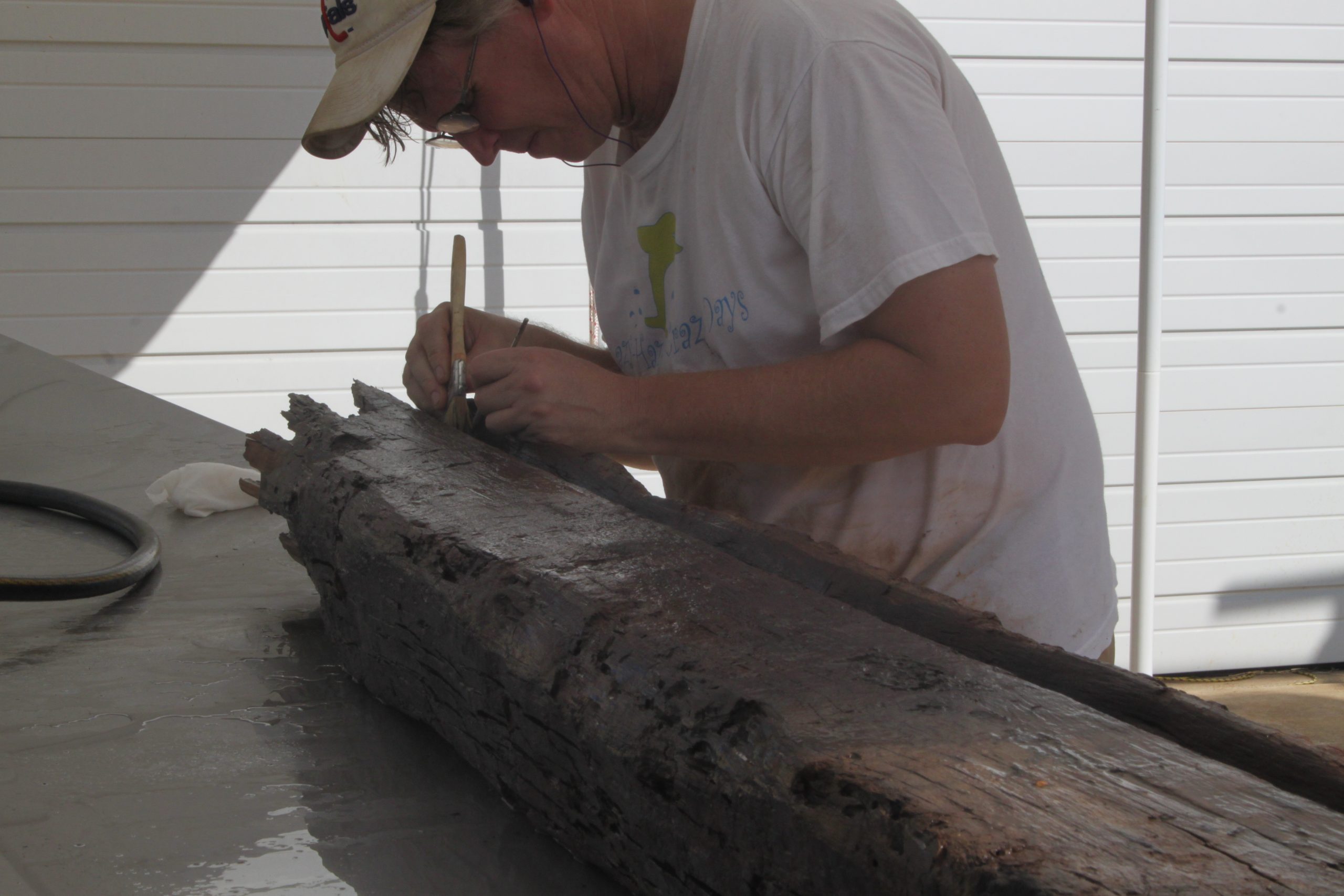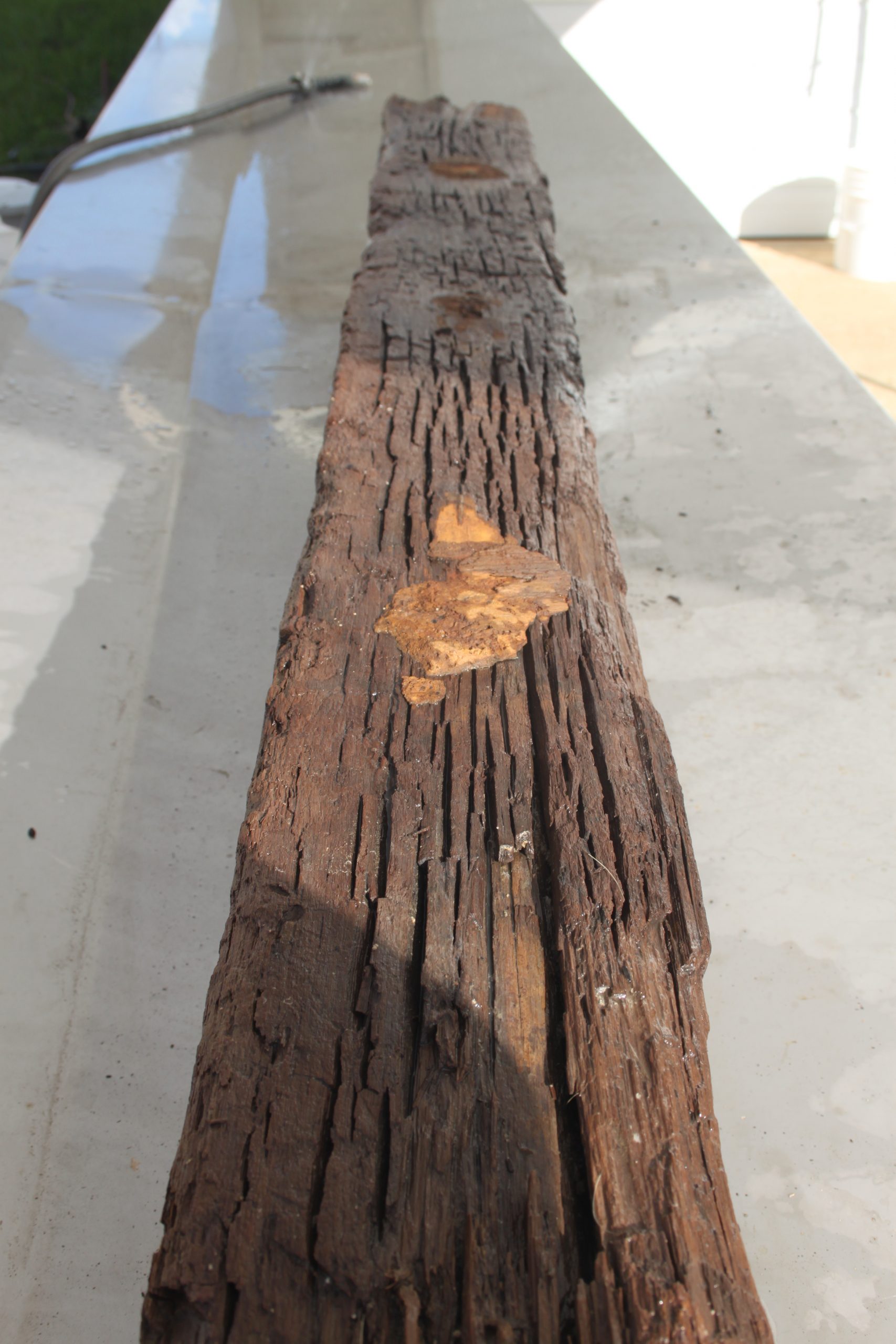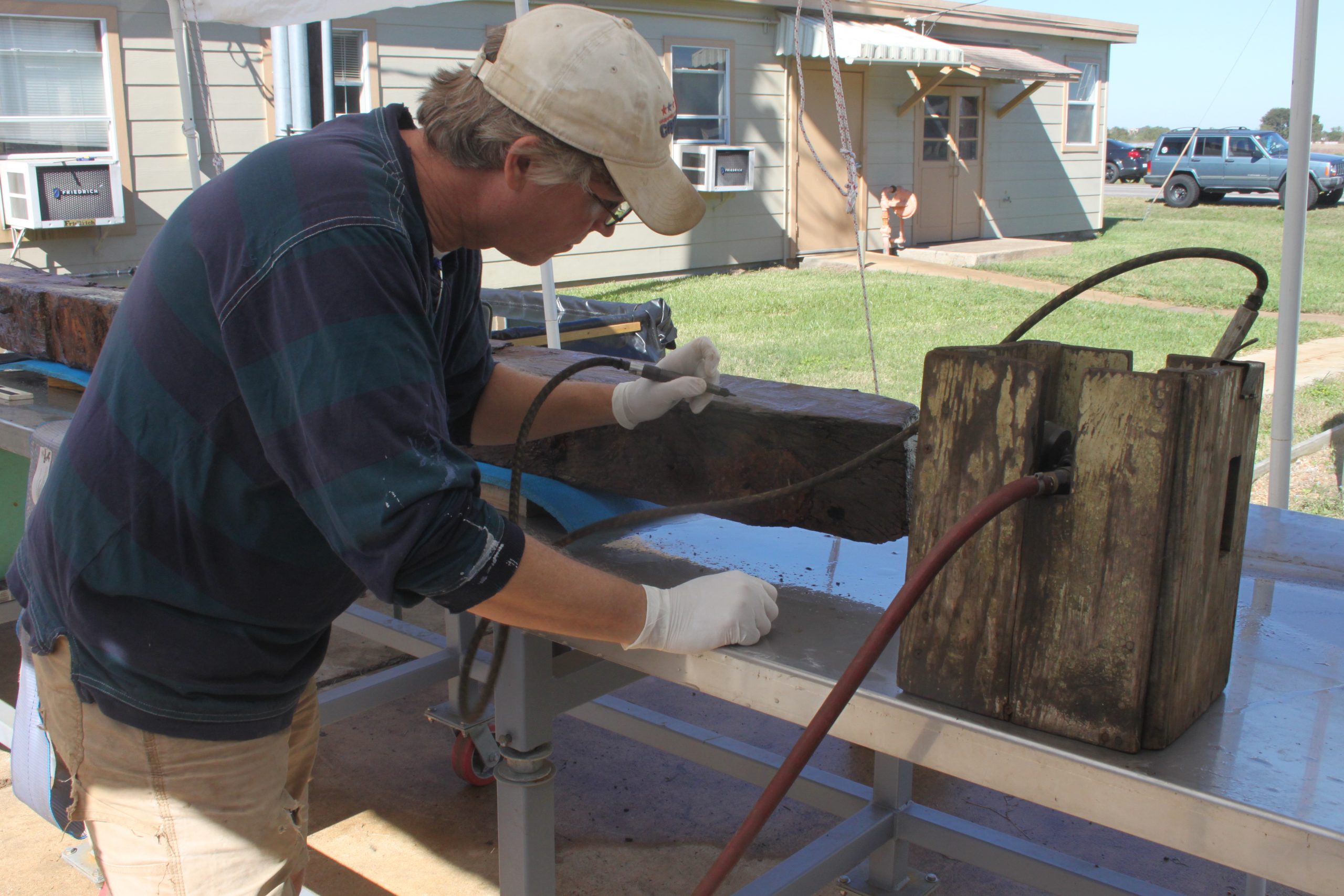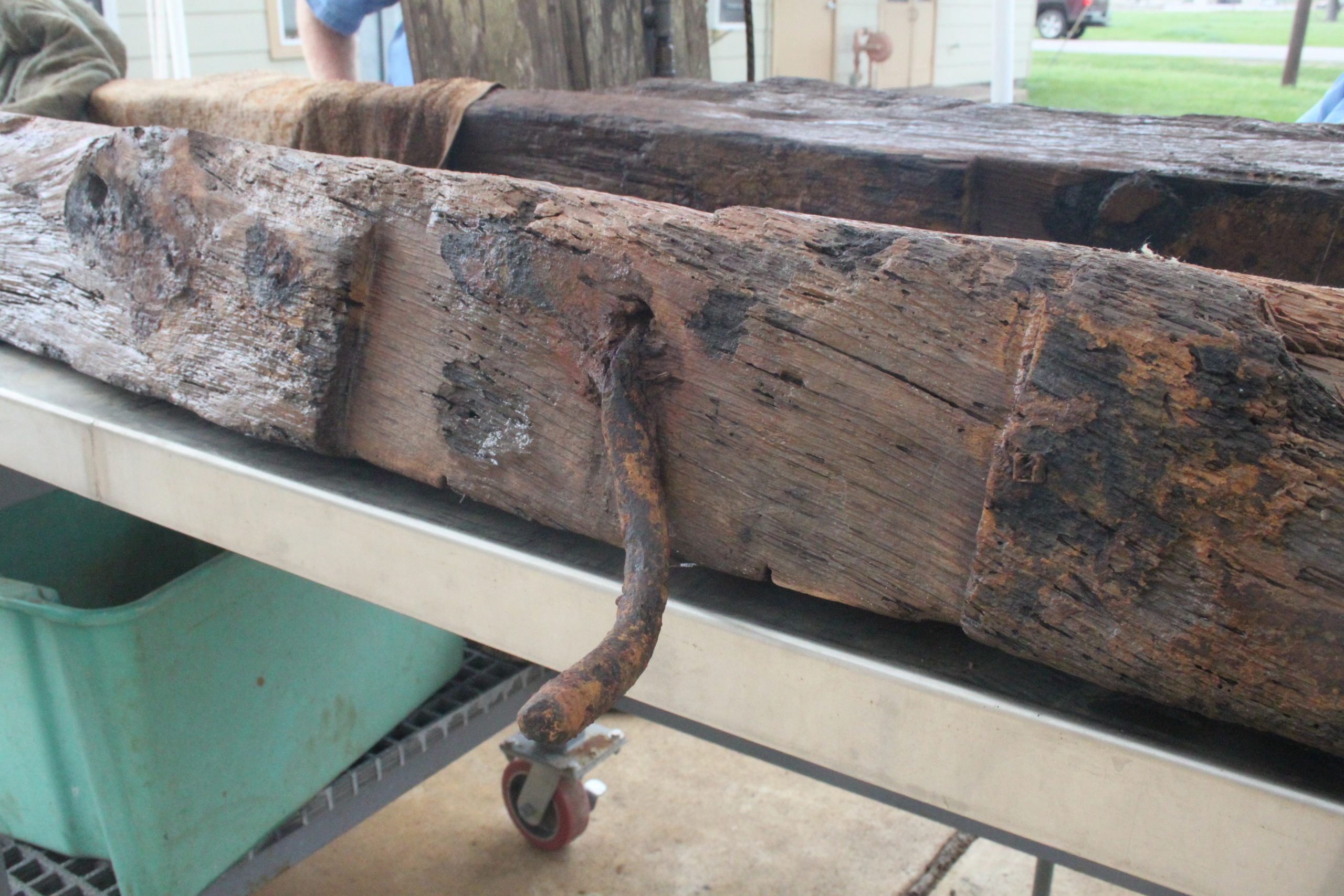World Trade Center Ship Mechanical Cleaning
After the documentation process is completed, the next stage in the conservation of the timbers is mechanically cleaning. Each timber is carefully inspected for gasket material, embedded rocks, shells, and corrosion from iron fasteners.

The WTC ship was built with iron fasteners, and iron corrodes in the presence of seawater. This corrosion forms patches of mineral encrustation at the site of the fasteners, and needs to be removed prior to chelation.

The CRL utilizes brushes, dental tools, and variable-speed pneumatic scribes to mechanically clean the timbers.

In some cases, the iron fasteners are too large to mechanically remove without damaging the wood. For these, we leave them be and let the timbers begin the chelation treatment. As the chelating chemicals begin to remove the iron from the wood, the large fasteners become loose and easier to remove.

After each timber is cleaned, the next stage is chemical chelation.
Conservation Stages
Stage 1: Documentation
⇒ Stage 2: Mechanical Cleaning
Stage 3: Chemical Chelation
Stage 4: Bulking
Stage 5: Freeze Drying
Stage 6: Final cleaning and assembly
Contract Services
The CRL works with a variety of academic institutions, museums, historical societies, government offices, and private individuals. Our goal is to create viable conservation strategies of the highest standard that can be accomplished at minimal cost. For more information, visit our services page.
Read about the faculty and conservators who run the Conservation Research Labratory. We are also aided by several individuals who volunteer their time to help conserve artifacts. If you are interested in joining the volunteers at the CRL, please contact our lab manager.
Support
Monetary donations and volunteer workers are vital to the ongoing success of the Conservation Research Laboratory. If you would like to volunteer your time and expertise, please write us here. If you would like to become one of our donors, please click the link below and direct your gift to: Center for Maritime Archaeology and Conservation.
